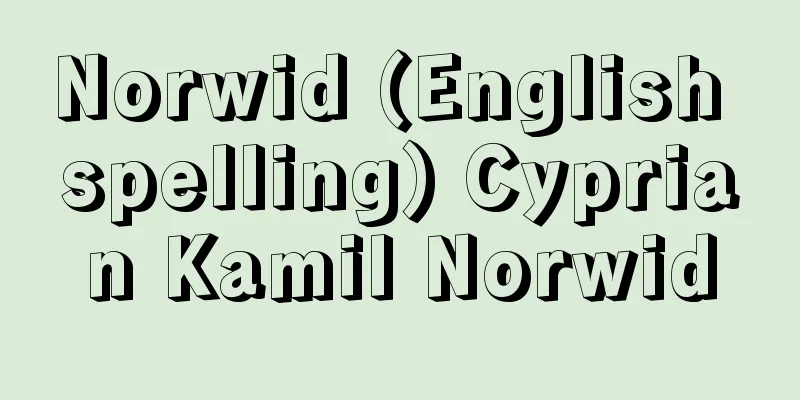Kamo Taketsunomi no Mikoto - Kamo Taketsunomi no Mikoto

|
The ancestor of the Kamo no Agata-nushi (a clan that worships the Kamigamo and Shimogamo shrines) of Yamashiro (Kyoto), who appears in a fragment of the "Yamashiro no Kuni Fudoki" and the "Shinsen Shojiroku." According to the "Yamashiro no Kuni Fudoki," he descended from heaven to Sonomine in Hyuga, led Emperor Jinmu to stay at Katsuragiyama in Yamato, and later traveled along the river from Kamo in Okada, Yamashiro (Kamocho district, Kizugawa City, Kyoto Prefecture) to the Kamo River, and looking upstream in the distance, he named it "Ishikawa no Semi no Ogawa" (Semi-no-Ogawa of the Ishikawa River), and enshrined in Omiyamori (west of Kamigamo Shrine). There is no documentation that Kamo no Asomi of Katsuragi and Kamo no Kuni no Miyatsuko of Yamashiro are of the same descent, and therefore, with the exception of the section on looking from a distance, these legends are merely the result of an attempt to link the ancestor to the descent of the grandson of heaven and the legend of Jinmu. Similarly, in the Shinsen Shojiroku, when Emperor Jimmu entered Yamato, he transformed into a large crow and led the way through the mountains of Kumano, and there are doubts about whether this is a rare form of totemism in Japan. The Kamo-sha Engi in the Fudoki explains that she gave birth to Tamayorihime (the deity worshipped at the lower shrine) and became the maternal grandfather of Kamo Wakeikazuchi (the deity worshipped at the upper shrine), but in the original legend, it is highly likely that the deity who became a red-painted arrow, drifted ashore, and married Tamayorihime was this progenitor. [Yoshii Iwao] Source: Shogakukan Encyclopedia Nipponica About Encyclopedia Nipponica Information | Legend |
|
『山城国風土記(やましろのくにふどき)』逸文および『新撰姓氏録(しんせんしょうじろく)』にみえる、山城(京都)の賀茂県主(かものあがたぬし)(上賀茂(かみがも)・下鴨(しもがも)社を祀(まつ)る氏族)の始祖。『山城国風土記』によれば、日向(ひむか)の曽(そ)の峯(みね)に天降(あまくだ)り、神武(じんむ)天皇の先導となって大和(やまと)の葛城(かつらぎ)山に宿り、のちに山城の岡田の賀茂(京都府木津川(きづがわ)市加茂町(かもちょう)地区)から川沿いに賀茂川に至り、上流を遠望して「石川の瀬見(せみ)の小川」と名づけ、大宮森(上賀茂社の西方)に鎮座したという。葛城の賀茂朝臣(かものあそみ)とこの山城の賀茂県主とを同系とする資料は何もなく、したがって、遠望の条を除きこれらの伝承は、始祖を天孫降臨や神武伝承に結び付けようとした作為の結果にすぎない。また、『新撰姓氏録』にある神武天皇の大和入りに際し、熊野(くまの)山中を大烏(おおがらす)に化して先導したという話も同様で、わが国にまれなトーテミズムと考えることにも疑問がある。風土記の賀茂社縁起では、玉依日売(たまよりひめ)(下社の祭神)を生み、賀茂別雷(かもわけいかずち)神(上社の祭神)の外祖父となったと説くが、原伝承では、丹塗矢(にぬりや)となって流れ寄り玉依日売と婚した神は、この始祖であった可能性が高い。 [吉井 巖] 出典 小学館 日本大百科全書(ニッポニカ)日本大百科全書(ニッポニカ)について 情報 | 凡例 |
Recommend
Lady Otomo Sakanoue - Lady Otomo Sakanoue
?-? A poet of the Nara period. Daughter of Otomo ...
Hanging parrot
A general term for birds in the genus Loriculus in...
Utai-gakari - Utai-gakari
...These Kyogen chants, or all of the chants uniq...
General Terms
This refers to a provision that generally and abst...
Kishuku [town] - Kishuku
An old town in the northern part of Fukue Island i...
Eri Fisheries - Erigyogyo
…The reason why the jars in these Southeast Asian...
Gottschalk, L.
...From the middle of the 19th century, European ...
North Pole Distance - hokkyokukyori
The angle from the north celestial pole to a celes...
corticotropin releasing factor
…The hypothalamic hormones currently known are CR...
Cannibal sister - Cannibal sister
This Japanese folk tale is also known as "The...
Agitation - Agitation
Stirring. A simple task that has long been used in...
Raab
…It is called the "City of Four Rivers"...
Hermes - Hermes (English spelling)
One of the twelve Olympian gods in Greek mytholog...
Kabara - Kabara
...Such tax contracts became popular around the e...
Butsumetsu
One of the Rokuyo days, these are days that are c...









